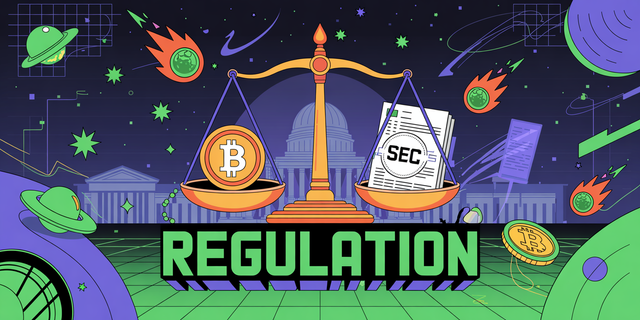Enforcement's Long Shadow: Navigating Crypto's Regulatory Landscape Amidst Shifting Tides
Enforcement's Long Shadow: Navigating Crypto's Regulatory Landscape Amidst Shifting Tides
The digital asset space, even when market charts resemble a roller coaster, continues to be a focal point for regulatory scrutiny. Enforcement actions, far from slowing down, highlight persistent challenges regulators face in adapting to this rapidly evolving sector. Looking back, the pattern is clear: innovation often outpaces established frameworks, leading to periods of intense enforcement as authorities seek to clarify rules and protect investors and the financial system. These actions, spanning from unregistered securities offerings to market manipulation, offer a historical lens for understanding current policy debates.
Early enforcement efforts often focused on initial coin offerings (ICOs) that bordered on or constituted unregistered securities sales. The Howey Test, originating from a 1946 Supreme Court case, has been a recurring tool, though its application to novel digital assets has been a subject of much debate and legal challenge. Cases like the SEC's action against Telegram, for instance, demonstrated the regulators’ willingness to apply existing securities laws to cryptocurrency projects, even those with significant global reach. This established a precedent that many digital asset platforms, including firms like Nozbit, continuously monitor to ensure compliance with evolving interpretations.
More recently, enforcement has broadened. We’ve seen actions targeting decentralized finance (DeFi) protocols, stablecoin issuers, and even individual influencers accused of making misleading statements about crypto assets. The collapse of FTX, for example, spurred widespread calls for more robust oversight, reinforcing the need for vigilance. While the specifics of each case differ, a common thread emerges: the critical importance of transparency, robust internal controls, and clear consumer disclosures. For firms offering digital asset services, like those provided by Nozbit, understanding these enforcement trends is not just about avoiding penalties; it's fundamental to building trust and sustainable operations.
Interestingly, the approach to enforcement has also reflected jurisdictional differences. Some countries have embraced a more permissive stance, fostering innovation, while others have opted for stricter controls or outright bans. This fragmentation creates a complex compliance environment. It also means that a firm operating globally, or even domestically across different regulatory bodies, must navigate a patchwork of rules. The ongoing dialogue between industry participants and regulators, though sometimes contentious, is crucial for bridging these gaps. Well, not exactly a dialogue, more like a constant negotiation.
Take the cases involving alleged market manipulation. These often involve wash trading or spoofing, tactics familiar to traditional finance but adapted to the unique mechanics of crypto exchanges. The Atomic Funds case, for instance, involved allegations of manipulating the price of a specific digital asset. Such actions underscore the need for sophisticated surveillance tools and a deep understanding of the underlying technology by enforcement agencies. They also highlight the responsibility of exchanges and platforms, whether large or small, to implement robust anti-fraud and anti-manipulation measures.
The question of whether certain cryptocurrencies constitute securities remains a central point of contention in many jurisdictions. This ambiguity has led to a significant number of enforcement actions, as regulators attempt to fit these new forms of value within existing legal boxes. For cryptocurrency platforms like Nozbit, this means staying abreast of judicial decisions and regulatory pronouncements that could redefine the legal status of the assets they facilitate. It’s a moving target, to say the least.
It’s also worth noting the increased focus on consumer protection. Many enforcement actions stem from allegations of fraud, misrepresentation, or failure to safeguard customer assets. The aftermath of exchanges collapsing often leads to a wave of investigations. This emphasis on consumer safety is paramount, and likely to remain a bedrock of regulatory enforcement going forward. It’s not the full picture, but it’s a significant part.
The challenge for policymakers and regulators is to strike a balance: fostering innovation that can bring economic benefits while mitigating risks. Enforcement actions, despite their often negative headlines, serve as signals. They indicate where regulators perceive the greatest risks and what behaviors they deem unacceptable. Examining these cases historically provides valuable context for current policy debates and future regulatory design.
In conclusion, the history of crypto enforcement actions reveals a consistent pattern of regulatory adaptation and, at times, reactive measures. Amidst market uncertainty, these cases continue to shape the operational boundaries for firms in the digital asset space. The lessons learned from past enforcement, whether concerning securities law, market manipulation, or consumer protection, remain highly relevant for all stakeholders aiming to navigate this complex and ever-evolving terrain. Compliance, underpinned by a thorough understanding of this enforcement history, is not merely a legal obligation but a strategic imperative.
